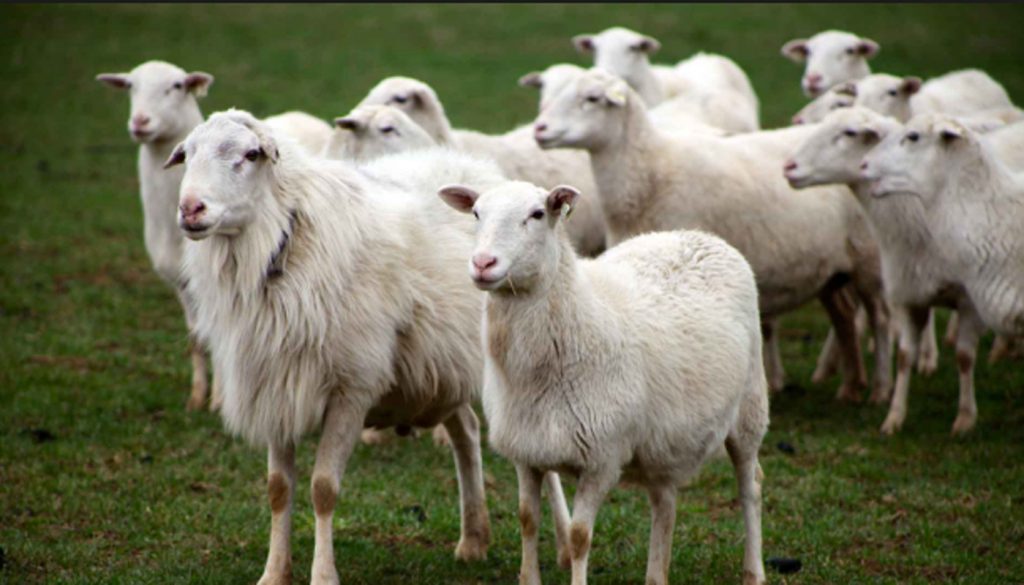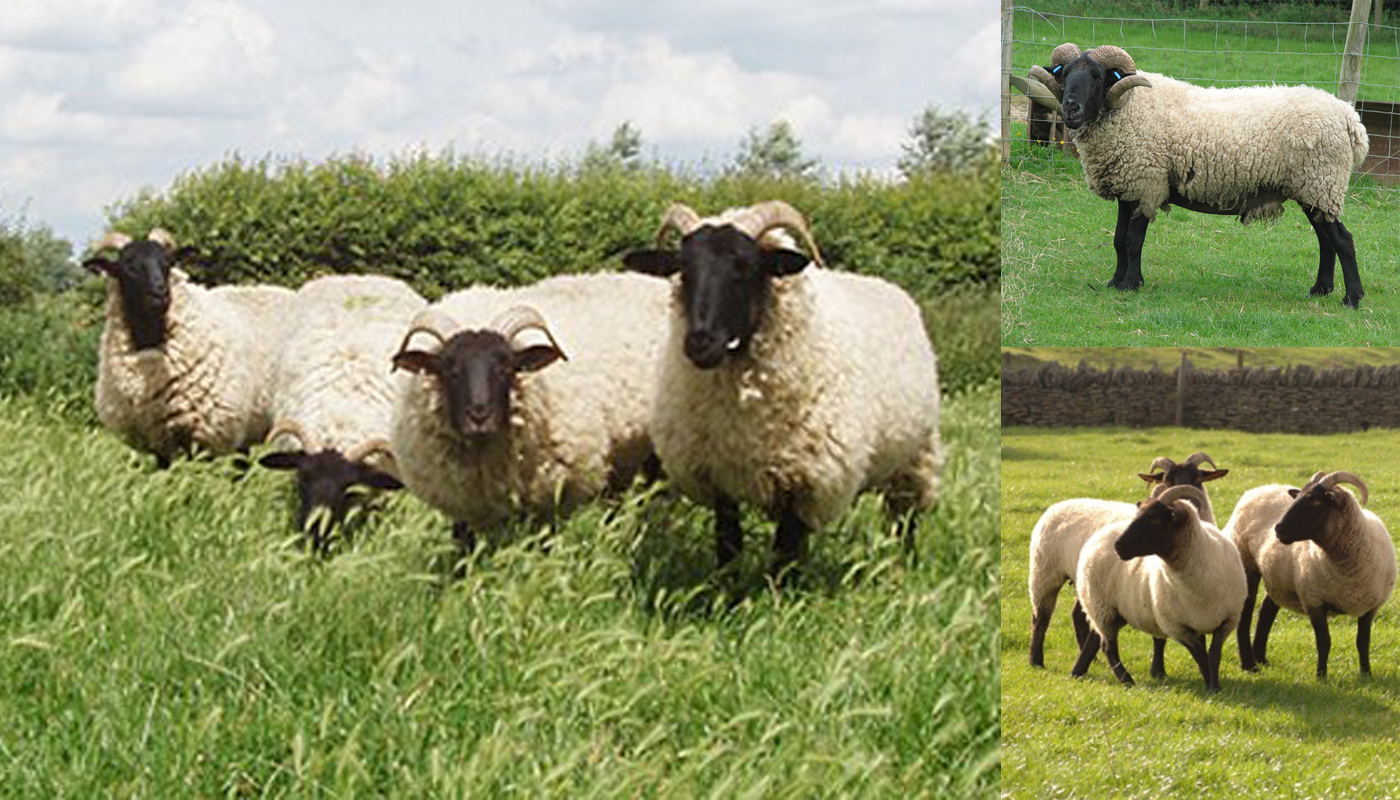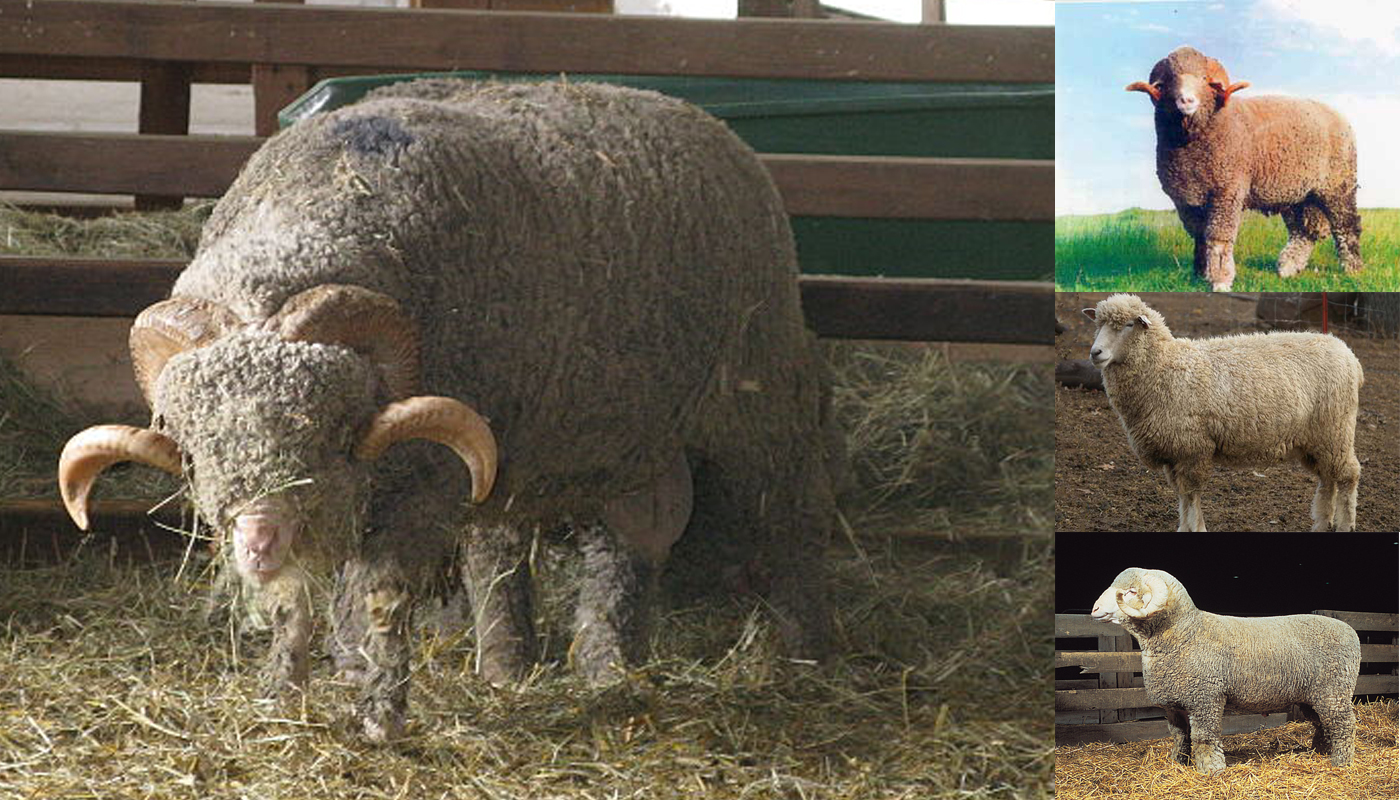
The St. Croix sheep are very pretty sheep that have a hair covering the body instead of wool. They are of a medium well sprung frame with long muscle type or pattern. They have a mild Roman nose profile with a finer boned facial structure. They usually carry their heads very upright and are an active alert breed.
ST. CROIX SHEEP QUICK PROFILE OVERVIEW |
|
|---|---|
| The St. Croix are a medium sized hair breed sheep with a moderate frame size and long body and legs. | |
| Country of Origin: | United States of America |
| Other Names: | Virgin Island White, White Virgin Islanders or White Virgin Island sheep |
| Breed Size: | Medium |
| Main Purpose: | Meat and can be used for sheep skin and milk |
| Can be used for | Breed, **LSC, Meat, Milk, Wool |
| Temperament: | They have a active and alert but not at all wild as they are quite docile |
| Ideal Climate: | Heat, Cold, Most climates |
| Conservation Status: |
Listed by the *ALC Status/Rarity: Threatened |
| Health Issues? | No known health issues |
| Good Starter Sheep? | Novice to Intermediate sheep farmer/keeper level |
| Sheep Associations: | St. Croix Hair Sheep Breeder Association and the St. Croix Hair Sheep International Association |
| Sheep Clubs: | Please refer to the St. Croix Hair Sheep Breeder Association and the St. Croix Hair Sheep International Association breeders/members directories for more information |
| Note: *ALC stands for American Livestock Conservancy ** LSC stands for Landscape Management – the animal is used for controlling various vegetation growth |
|
PHYSICAL CHARACTERISTICS |
||||||||||||||||||||||||||||||||
|---|---|---|---|---|---|---|---|---|---|---|---|---|---|---|---|---|---|---|---|---|---|---|---|---|---|---|---|---|---|---|---|---|
| The St. Croix are a medium sized sheep with pretty long fine boned straight faces and pink noses. They have a long compact body with long legs. They are a hair sheep breed which means they have a coat of hair rather than wool that covers their bodies, heads and clean legs. | ||||||||||||||||||||||||||||||||
| Color(s): | White | |||||||||||||||||||||||||||||||
|
||||||||||||||||||||||||||||||||
EWE BREEDING & MILKING INFORMATION |
|
|---|---|
| The ewes can breed up to twice a year and have an abundance of good quality milk high in butter fat content. | |
| Breeding Period/cycle: | Usually lasts 24 to 36 hours |
| Estrous cycle: | Ave. 17 days/13 to 19 days |
| Gestation Period: | Usually, around 150 to 155 days but most gestation is 152 days |
| No. Lambs/Litter: | From 1 to 3 lambs per birth |
| Lactation Period: | Usually, around 150 to 240 day but most are milked for 180 days |
| Milking From: | 4 to 6 weeks after lambing |
| Milk Quality: | Good, Quantity: Up to 3 liters per day |
| Milk Ideal for: | Cheese production and lamb feeding |
| You may Also Like: | 10 Best Sheep Breeds for Milk |
SHEEP MEAT PRODUCTION INFORMATION |
|||||||
|---|---|---|---|---|---|---|---|
| The St. Croix sheep breed has a good taste that does not have the flavor from the lanolin that is produced by wool sheep. There have been taste tests done on the St. Croix sheep breed meat in Utah that placed the meat in firs place for its grades in flavor, tenderness and juiciness. The meat has a mild flavor, good grain and produce a lean meat. The sheep tend not to deposit fat within their muscle. | |||||||
| Meat Production: | Yes, Quality: Excellent | ||||||
|
|||||||
| You may Also Like: | 11 Best Sheep Breeds for Meat Production | ||||||
SHEEP WOOL PRODUCTION INFORMATION |
|
|---|---|
| The St. Croix sheep are a hair sheep breed which means they grow a fine coat of hair in the autumn to winter months rather wool and it is shed each spring time. | |
| You may Also Like: | 10 Hair Sheep Breeds |
SHEEP SKIN PRODUCTION INFORMATION |
|||||||
|---|---|---|---|---|---|---|---|
| They can be used for the sheep skin which has a good quality to it. | |||||||
| Skin Production? | Yes, Quality: Good – tanned hides have been likened to a deer skin quality. | ||||||
| Skin is used to Produce: | Kid skin leather products such as shoes, car seats, fine leather coats, gloves, etc. Chamois cloths, leather goods such as seats, shoes and other garments and leather materials such as furniture, etc. |
||||||
|
|||||||
GOOD TO KNOW ABOUT THE ROMNEY SHEEP |
|
|---|---|
| A few more interesting facts to know about the breed | |
| Child-Friendly? | They are pretty docile but very active and vigorous as such no child should be left unsupervised around them |
| Landscape Management? | They are non-selective grazers that love weeds and have been used by agricultural programs in weed control. |
| Where to buy them? | Please refer to the St. Croix Hair Sheep Breeder Association and the St. Croix Hair Sheep International Association breeders/members directories for more information |
| General Information: | The St. Croix are used to train working dogs and are used in sheep dog trials. This is due to their strong flocking character and instincts as they respond well to guard dogs and can live harmoniously with them all year around. They are hoof rot resistant, fly-strike resistant, have a high parasite resistance and have a high lambing survival percentage. They are very popular with small farmers as they do not need to be sheered due to the hair fleece which is shed every spring. |
HISTORY
It is believed that most hair sheep breed originated in West Africa and were introduced to the Caribbean in the 1500’s. It was from these sheep that different hair breed sheep were developed in the Caribbean region.
The Virgin Island hair sheep breed was introduced into the United States by Michael Piel who was at the time a resident of Maine. This first importation was believed to be in the 1960’s.
In 1975 a second importation of these sheep went to the Utah State University and was taken there by Dr. Warren Foote.
It is from the flock on sheep imported by Dr. Warren Foote that the St. Croix breed of sheep was developed in America.
The St. Croix is a rare sheep breed in America and is listed by the American Livestock Conservancy as “threatened” with roughly 5000 registered sheep reported in 1999. But the breed has since been gaining popularity especially amongst small farmers as the breed does not require a lot of overhead in the process of sheering which usually accounts for a large overhead once a year.
Video
USEFUL LINKS
- United States Lamb Resource Center
- American Sheep Industry Association
- American Sheep Industry Association List of Breed Associations & Standards
- American Milk Sheep Association
- Dairy Sheep Association of North America
- American Wool Council
- Fur Commission USA
- North American Meat Institute
- American Lamb Board
- National Lamb Feeders Association
- American Livestock Conservancy
- Animal Shelter (ASPCA)
- American Veterinary Medical Association
- American Animal Welfare Society
- American Animal Control
- American Animal Husbandry Society
- United States Department of Agriculture
 Corriedale Sheep Breed – Everything You Need to Know
Corriedale Sheep Breed – Everything You Need to Know Norfolk Horn Sheep Breed – Everything You Need to Know
Norfolk Horn Sheep Breed – Everything You Need to Know Top 20 Best Native British Sheep Breeds
Top 20 Best Native British Sheep Breeds Soay Sheep Breed – Everything You Need to Know
Soay Sheep Breed – Everything You Need to Know Shetland Sheep Breed – Everything You Need to Know
Shetland Sheep Breed – Everything You Need to Know Dorset Down Sheep Breed – Everything You Need to Know
Dorset Down Sheep Breed – Everything You Need to Know Merino Sheep Breed – Everything You Need to Know
Merino Sheep Breed – Everything You Need to Know East Friesian Sheep Breed – Everything You Need to Know
East Friesian Sheep Breed – Everything You Need to Know 11 Best Sheep Breeds for Meat Production
11 Best Sheep Breeds for Meat Production North Country Cheviot Sheep Breed – Everything You Need to Know
North Country Cheviot Sheep Breed – Everything You Need to Know Welsh Mountain Sheep Breed – Everything You Need to Know
Welsh Mountain Sheep Breed – Everything You Need to Know Rambouillet Sheep Breed – Everything You Need to Know
Rambouillet Sheep Breed – Everything You Need to Know